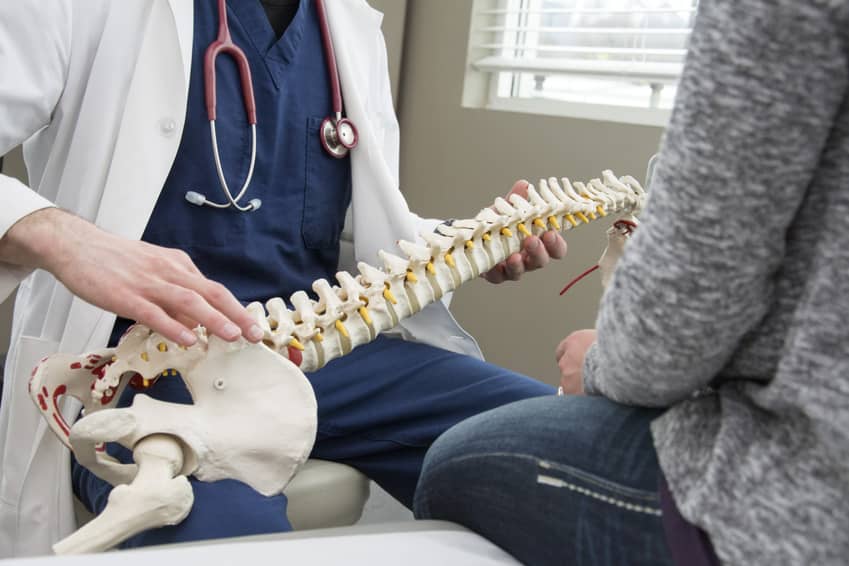Have you been struggling with persistent back pain that just won’t go away? You’re not alone. Millions of people deal with chronic back pain, and finding the right specialist can be the key to long-term relief. While many healthcare providers offer treatments, neurosurgeons stand out for their expertise in diagnosing and addressing spinal conditions at their root cause.
When conservative treatments fail, or if your pain is caused by an underlying nerve or spinal issue, seeing a neurosurgeon may be your best option. But what exactly does a neurosurgeon do, and how can they help you overcome your back pain? Keep reading to learn more about the role of neurosurgeons in spine care and when you should consider seeking their expertise.

What Does a Neurosurgeon Do?
A neurosurgeon specializes in the diagnosis and treatment of conditions affecting the brain, spine, and nervous system. Unlike neurologists, who primarily manage neurological disorders with medication and therapy, neurosurgeons are trained to perform surgical procedures when necessary. For back pain, a neurosurgeon can pinpoint the cause—whether it’s a herniated disc, spinal stenosis, or nerve compression—and provide both surgical and nonsurgical treatment options.
While orthopedic surgeons also treat spinal conditions, neurosurgeons have specialized training in the nervous system, making them particularly adept at addressing nerve-related pain and spinal cord issues. If your back pain is linked to nerve damage or requires precision spine surgery, a neurosurgeon is often the best choice for comprehensive treatment.
When Should You See a Neurosurgeon for Back Pain?
Back pain is a common issue, but not all cases require a neurosurgeon’s expertise. However, if your pain persists despite conservative treatments or is accompanied by concerning symptoms, seeking specialized care is crucial. A neurosurgeon can determine if your condition requires intervention, whether surgical or non-surgical.
Signs You Should See a Neurosurgeon:
- Chronic pain lasting more than 12 weeks despite medication and physical therapy.
- Severe pain radiating down the legs (sciatica), which may indicate nerve compression.
- Weakness, numbness, or tingling in your legs, feet, or arms.
- Loss of bladder or bowel control, which could be a sign of a serious condition like cauda equina syndrome.
- Difficulty standing, walking, or maintaining balance due to spinal issues.
- A history of spinal injuries or trauma leading to worsening pain.
- Diagnosed conditions such as herniated discs, spinal stenosis, or degenerative disc disease that may require surgical evaluation.
If you experience any of these symptoms, consulting a neurosurgeon can help you determine the best course of action for relief and long-term spinal health.
Patients Testimonials
What Can a Neurosurgeon Do for Back Pain?
When back pain becomes severe or persistent, a neurosurgeon can offer advanced solutions beyond conventional treatments. Their expertise extends from diagnosing the root cause of pain to implementing specialized interventions, including minimally invasive techniques and complex surgical procedures. Depending on the severity of your condition, a neurosurgeon may recommend either non-surgical treatments or surgery to alleviate pain, restore function, and improve your quality of life.
Minimally Invasive Surgical Options
Minimally invasive spine surgery offers an effective way to relieve back pain with smaller incisions, reduced recovery time, and lower risk of complications. These procedures are designed to target the root cause of pain while preserving as much healthy tissue as possible.
Common Minimally Invasive Procedures:
- Microdiscectomy – Used to treat herniated discs that compress spinal nerves, alleviating pain, numbness, and weakness.
- Laminectomy – Removes a portion of the vertebra (lamina) to relieve pressure on the spinal cord or nerves, often used for spinal stenosis.
- Spinal Fusion – Stabilizes the spine by fusing two or more vertebrae, typically for degenerative disc disease or severe spinal instability.
- Spinal Cord Stimulation – A neuromodulation technique that delivers electrical impulses to the spinal cord to manage chronic pain.
- Kyphoplasty/Vertebroplasty – Minimally invasive treatments for spinal fractures, injecting bone cement to restore spine stability and relieve pain.
Traditional Surgical Options
In cases where minimally invasive treatments are not sufficient, traditional spine surgery may be necessary to correct structural problems, relieve nerve compression, and restore stability. These procedures are often recommended for severe or complex spinal conditions that require a more extensive surgical approach.
Common Surgical Procedures:
- Tumor Resection Surgery – Performed when a spinal tumor is pressing on nerves, requiring precise removal to relieve pain and preserve function.
- Open Discectomy – A procedure to remove a portion of a herniated disc that is pressing on a nerve, alleviating pain and improving mobility.
- Laminectomy with Fusion – Used to treat spinal stenosis and instability by removing part of the vertebra and fusing adjacent bones for added support.
- Spinal Reconstruction Surgery – Recommended for severe spinal deformities, trauma, or degenerative conditions, restoring proper alignment and function.
- Complex Spinal Fusion – A procedure that stabilizes multiple vertebrae, often necessary for advanced degenerative disc disease or scoliosis.

Best Neurosurgeon in Orange County
Dr. Taghva specializes in the treatment of neck pain, low back pain, sciatica, brain tumors, Parkinson’s disease, as well as other conditions requiring brain or spine surgery.

What to Expect During a Neurosurgeon Consultation
During your consultation with a neurosurgeon, the first step is a comprehensive evaluation of your medical history and symptoms. The neurosurgeon will ask about the duration, intensity, and location of your pain, as well as any previous treatments you’ve tried. They may also conduct a physical examination to assess your range of motion, reflexes, and nerve function to pinpoint the underlying cause of your discomfort.
In addition to the physical assessment, diagnostic imaging such as MRI or CT scans may be ordered to get a clearer view of your spine and nerves. Once the diagnosis is confirmed, the neurosurgeon will discuss possible treatment options, which may include conservative therapies, minimally invasive procedures, or traditional surgery. This consultation is your opportunity to ask questions, understand the risks and benefits of each approach, and determine the best course of action for lasting pain relief.

How to Choose a Neurosurgeon for Your Back Pain
Choosing the right neurosurgeon for your back pain is crucial to achieving the best outcome. Experience, specialized training, and a history of successful procedures all play a role in selecting a qualified specialist. Back pain can have many causes, and only an expert can accurately diagnose and develop an effective treatment plan tailored to your needs.
Dr. Alexander Taghva, a board-certified neurosurgeon in Orange County, California, is an expert in minimally invasive spine surgery and neuromodulation therapies. Having trained at Johns Hopkins University School of Medicine and completed a prestigious neurosurgery residency at the University of Southern California, Dr. Taghva is at the forefront of cutting-edge spinal treatments. Whether you require non-surgical intervention or advanced surgical procedures, Dr. Taghva’s expertise ensures you receive the highest quality care.
If you’re ready to take the next step toward relief from chronic back pain, call us at 949-388-7190 or visit our contact page to schedule a consultation today.
